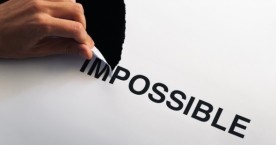 C’est impossible! That’s what our hostess exclaimed when my husband and I showed up for breakfast at the hotel we’d booked in Strasbourg, France. She didn’t mean it was impossible to have breakfast, she meant it was impossible for my husband to be there. Yet, there he was – alive and well – and hungry.
C’est impossible! That’s what our hostess exclaimed when my husband and I showed up for breakfast at the hotel we’d booked in Strasbourg, France. She didn’t mean it was impossible to have breakfast, she meant it was impossible for my husband to be there. Yet, there he was – alive and well – and hungry.
(Let me back up a bit. When we had checked into the hotel the day before, we discovered there had been a mix-up in our reservation. Though we booked a double-room for two, the hotel showed only a single room was reserved. The error was quickly resolved and we were told what time breakfast (which was included with the room) would be served.
Now back to breakfast. It was immediately apparent there had been no communication between the front desk and the restaurant regarding how many people from room 505 would be showing up for breakfast that morning. Luckily, it took only a short explanation in some broken French to clarify the misunderstanding, and my husband and I were soon enjoying fresh croissants and brioches.
Yet I kept thinking back to our hostess’ reaction, which had implied that we’d done something wrong. It reminded me of similar customer service situations I’d encountered that had been handled less than elegantly. Certainly, part of her reaction may have been cultural (service in European countries can differ from what we’re used to in the U.S.) Still, it prompted me to share some thoughts on how to handle customer misunderstandings—regardless of whether the customer is in the right or not.
Apologize and acknowledge
It may the customer’s fault—or not. You don’t know yet, so avoid jumping to conclusions. Even if the customer is at fault, perhaps there is something you can do to avoid other customers making the same mistake. Could you provide clearer directions or put a process in place that will catch the mistake before it becomes a problem? Right now it doesn’t matter who’s at fault. A simple “I’m sorry. Let me see what we can do to resolve this” should work in most cases. (And really, aren’t you sorry this happened?)
Be polite and listen
Your customer is upset—he or she is being inconvenienced or is not receiving an expected service. (You may be inconvenienced as well, but part of your job in customer service is handling problems). Customers may become emotional; they may even become loud. It’s up to you to remain calm and listen. Of course, no one should ever put up with verbal abuse, but I’ve found that maintaining a calm, polite demeanor can prevent most situations from becoming overheated.
Focus on the solution, not the problem
There’s a parable I used to share when I taught a class on problem-solving. It applies here as well and it goes like this: A young woman and her two companions are hiking in the woods. A snake bites the young woman. Rather, than helping the young woman, the two companions spend precious time hunting down the snake. Needless to say, things don’t work out too well for the young woman. What’s the lesson here? Don’t take time trying to find and fix the cause of the problem while the customer is standing front of you. Instead, focus on what you can do to resolve the situation. You’ll have plenty of time later to track down that snake!
Follow up
Once you have the facts, explain to the customer what happened, offer a solution, and determine whether they are satisfied.
Following are two examples:
“We’re sorry you encountered a problem at breakfast. We sat you immediately so as not to inconvenience you while we researched what happened. After talking with the staff, we realized the front desk had not informed the restaurant of the correct number in your party. We will work with both teams to ensure better communication in the future. We hope you enjoyed your breakfast and we value the opportunity to serve you further during your stay.”
“We’re sorry you encountered a problem at breakfast. We sat you immediately so as not to inconvenience you while we researched what happened. We see that while you desired to book a double-room, you indicated only a single room on your reservation. We will look into how we can make this clearer for customers booking online in the future. I you wish, we will change the reservation to accommodate your additional guest at the appropriate rate.”
It’s not impossible for a mistake to happen. In fact, you can be sure you will encounter mistakes from time to time. But by keeping these points in mind, you can avoid the mistake of not handling them well.

Most unfortunate experience but sadly, rather common in France (not everywhere though). Upside is that the young generation is traveling more and spends more time in other countries so this is changing.
LikeLike
In all honesty, this mishandling could have happened anywhere in the world, including in the US. When she said “impossible”, she surely meant she cant be wrong about the number of breakfasts to serve for this room number. As she probably read a log that was not updated. That being said i am glad you could enjoy your viennoiseries promptly after you explained the situation.Cultural gap and perception surely explains a lot.
LikeLike